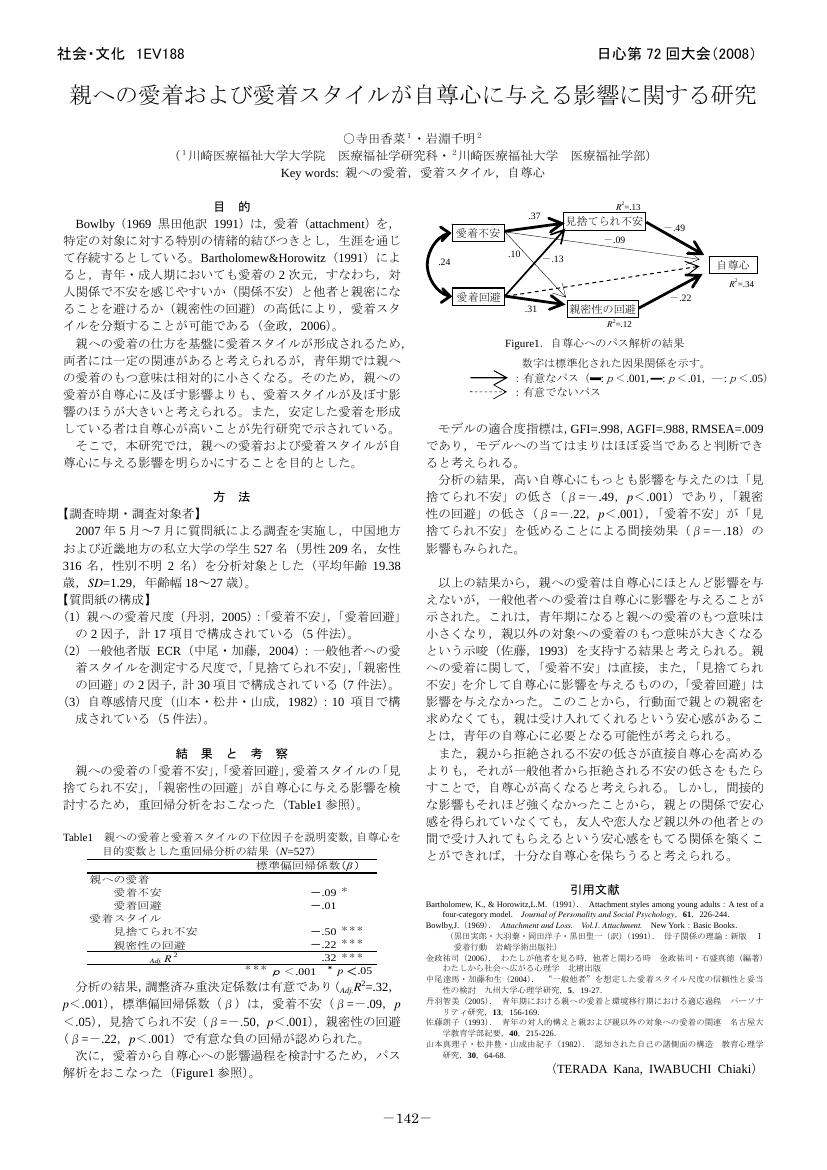3 0 0 0 OA 親への愛着および愛着スタイルが自尊心に与える影響に関する研究
- 著者
- 寺田 香菜 岩淵 千明
- 出版者
- 公益社団法人 日本心理学会
- 雑誌
- 日本心理学会大会発表論文集 日本心理学会第72回大会 (ISSN:24337609)
- 巻号頁・発行日
- pp.1EV188, 2008-09-19 (Released:2018-09-29)
1 0 0 0 OA ケプストラムおよびスペクトル分析による音声障害指標の日本語話声への適用について
- 著者
- 土師 知行 寺田 香菜子
- 出版者
- 日本喉頭科学会
- 雑誌
- 喉頭 (ISSN:09156127)
- 巻号頁・発行日
- vol.32, no.02, pp.195-206, 2020-12-01 (Released:2021-05-11)
- 参考文献数
- 19
The validity of the application of the Cepstral/Spectral Index of Dysphonia (CSID) to Japanese dysphonic speech was examined by analyzing normal and breathy voice samples both produced by healthy Japanese volunteers with no vocal problems. Four Japanese sentences which had phonological similarities to the English test sentences were prepared for the application of the CSID. The voice samples included sustained vowel /a/ and the four sentences.The CSID was applied for analyzing both the sustained vowel and the four sentences. Established indices based on pitch synchronous analyses, such as period perturbation quotient (PPQ), amplitude perturbation quotient (APQ) and noise to harmonic ratio (NHR) were applied to the samples of the sustained vowel.For the grade of the hoarseness and the breathiness, auditory perceptual evaluations of Japanese speech sentences and the sustained vowel were performed using a visual analog scale (VAS). GRBAS scale was used for evaluations of the sustained vowel only.Strong statistical relationships were found between the CSID and the three indices with pitch synchronous analyses. Furthermore, the CSID had strong statistical relationships with the two auditory perceptual evaluations as well, which was equal to relationships between the auditory perceptual evaluations and the indices with pitch synchronous analyses. Given that the CSID can be used to analyze speech samples whereas the indices with pitch synchronous analysis have certain technical problems to analyze speech samples, this index is considered to be applicable as a useful measure for evaluating vocal dysfunction of Japanese speech and should be used actively in clinical settings.
